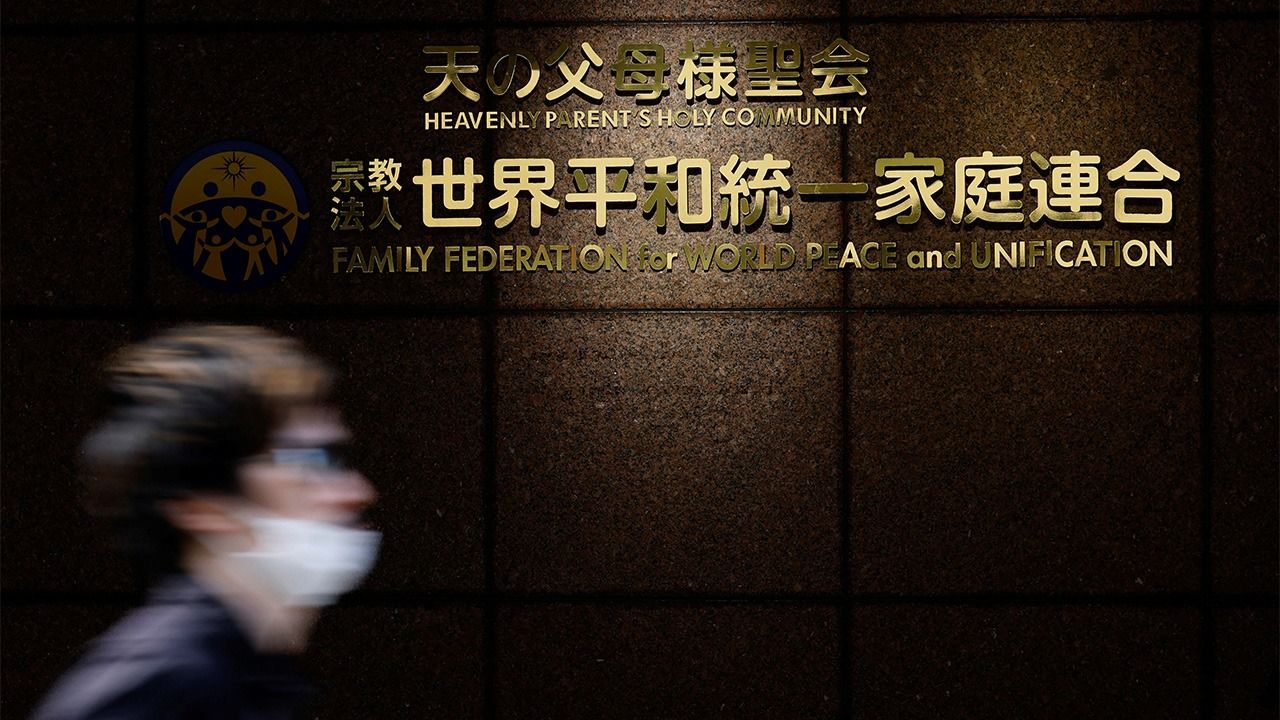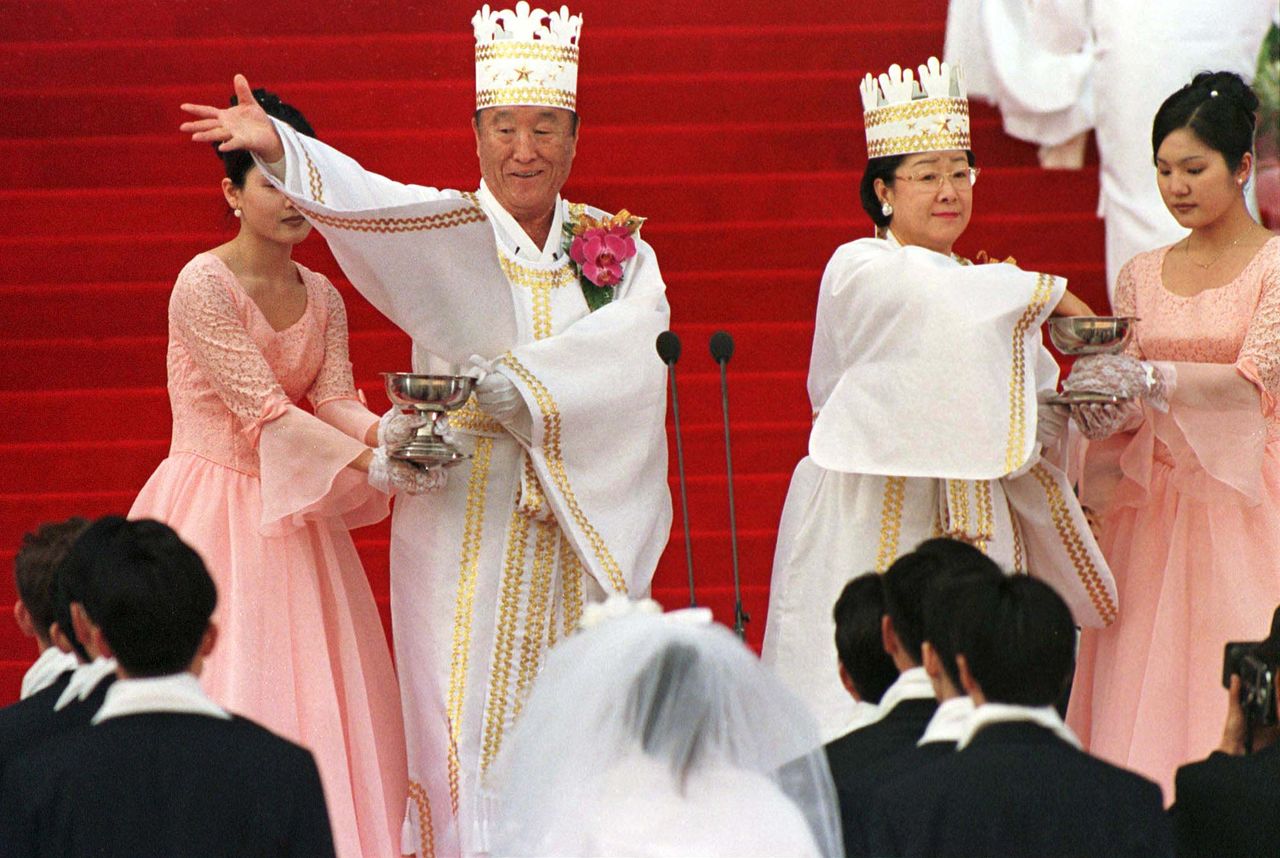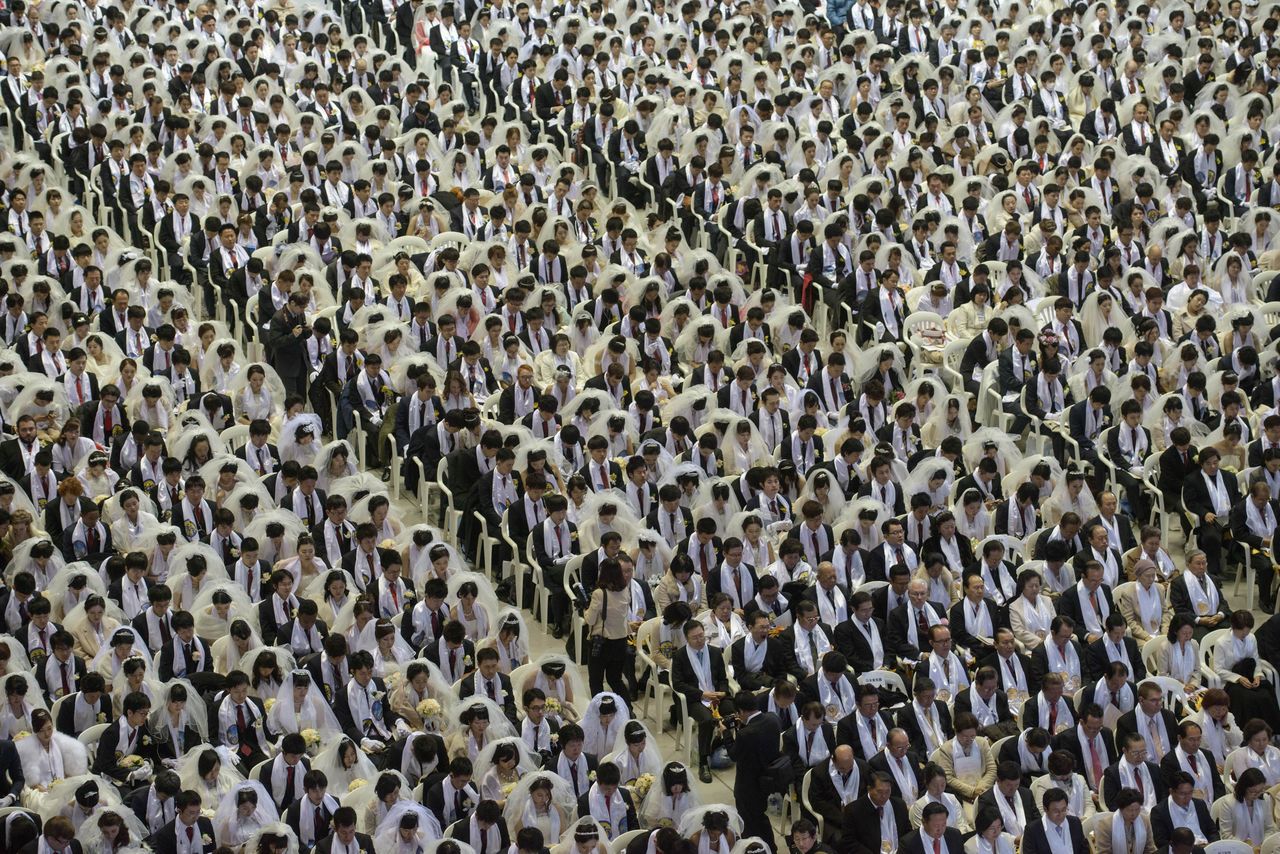
The Unification Church in Japan
An Unholy Alliance: How the Unification Church Penetrated Japan’s Ruling Liberal Democratic Party
Society Politics- English
- 日本語
- 简体字
- 繁體字
- Français
- Español
- العربية
- Русский
“Koreagate”
The current furor over the Unification Church, officially known as the Family Federation for World Peace and Unification, is nothing new. The organization has been dogged by controversy since its inception. As early as the 1960s, the Japanese media took notice of the UC’s activities, particularly the group’s recruitment of university students, leading the Asahi Shimbun to label it in 1967 a “fundamentalist movement that makes parents weep.” In the 1980s, the UC came under fire for so-called spiritual sales in which it conned followers and others of money by persuading them to buy exorbitantly priced goods like seals and urns. The organization drew further public suspicion in the 1990s for squeezing members for huge donations and conducting mass wedding ceremonies, the latter becoming news when a popular Japanese singer took part in the bizarre ritual.
The latest controversy revolves around the UC currying favor with members of the ruling Liberal Democratic Party and other legislators. The organization is no stranger to influence buying, as demonstrated by its involvement in the 1976 US political scandal “Koreagate.” The affair centered on wealthy South Korean businessman Park Tong-sun, who funneled money to various members of the US Congress, but the UC was a core player, a fact that has largely been forgotten.
The events of Koreagate are detailed in a 1978 report by a House International Relations subcommittee chaired by Donald M. Fraser, a Democratic legislator from Minnesota. The report alleges that the Korean Central Intelligence Agency used Park to bribe and influence US representatives in an attempt to reverse President Richard Nixon’s decision to withdraw some US troops from South Korea, a conciliatory gesture made to Beijing after Nixon’s historic visit to China in 1972. The KCIA, a formidable spy agency, was established by Kim Jong-pil, a confidant of President Park Chung-hee who would go on to serve two stints as prime minister.
Fraser in his report noted “active cooperation” between the KCIA and organizations related to Unification Church founder Sun Myung Moon. This was at the height of the Cold War, and the KCIA saw the UC with its firm anticommunist stance as a useful tool in achieving its geopolitical goals.
Around the same time in Japan, the UC founded the International Federation for Victory over Communism and appointed Sasakawa Ryōichi, a prominent right-wing figure and head of the Japan Shipbuilding Industry Foundation (now the Nippon Foundation), as its honorary chairman. Sasakawa had close ties with former Prime Minister Kishi Nobusuke and other members of the conservative wing of the LDP, and it was from this connection that the UC spread its influence throughout the party.
Posing as Religion
Some of the most damning revelations about the UC during the Koreagate investigation came from the testimony of several high-ranking leaders of the church in the United States. The individuals detailed how Moon used the guise of religion to further his economic and political goals through the Moon Organization, a global network of UC affiliated religious and secular groups, businesses, and nonprofit corporations.
Even as evidence of the UC’s dubious activities piled up, the church has been allowed to carry on as it pleased in Japan, largely due to the hesitancy of legislators to take legal actions against rogue organizations out of fear of trampling on the religious liberties of citizens. This has worked to the advantage of the UC, shielding it from government-imposed restrictions and allowing it to further expand the scope of its operations.

Sun Myung Moon and his wife bless couples at a mass wedding ceremony of the Unification Church in Seoul, South Korea, in 1999. (© Reuters)
Roots of a Cult
The UC’s involvement with the KCIA and rise to international prominence is startling given that Moon started out as the head of a fringe Christian sect known for engaging in strange sexual rituals. Pak Chung-hwa, a former church leader and confidant of Moon, detailed the early years of the sect in his 1993 book Roku Maria no higeki (The Tragedy of the Six Marys), which was first published in Japan. In the work, Pak talks about how Moon used his doctrine of “purifying” the blood of original sin to force female followers to have sex with him.
The idea of original sin, which holds that humans are born into a state of sinfulness as the result of the fall of Adam and Eve, is a tenet of many Christian faiths. However, Moon’s interpretation of Adam and Eve being cast out of the Garden of Eden diverges from the standard Old Testament story, which has the couple eating the forbidden fruit from the tree of knowledge. In his view, original sin is linked to Eve having sex with Lucifer, who appeared to her as a serpent, an act that corrupted her blood and subsequently, through sexual intercourse, that of Adam too.
Moon preached that a messiah would be sent who would establish a sin-free line by purifying the blood of six “Marys,” meaning married women. To fulfill the prophecy, the messiah would need to have sexual intercourse with the women a total of three times each. Presenting himself as the messiah, Moon used his doctrine to cajole female followers to sleep with him, and later bilked them of their money and assets.
Over time, the doctrine of sexual “purification” changed so that rather than intercourse with Moon, followers could be purified of original sin by marrying a spouse chosen for them by the church, giving rise to the mass wedding ceremonies that the UC is known for.

Thousands of couples marry in a mass wedding ceremony in March 2015. (© AFP)
Campus Recruiting
The UC early on saw Japanese universities as rich recruiting grounds and lured candidates to student clubs and study groups run by affiliate organization the Collegiate Association for the Research of Principles. It targeted students at top schools in particular, hoping to place converts from elite colleges like the University of Tokyo and Waseda University in leadership positions within the church.
A person contacted by a CARP representative in 1977 while still in high school describes the group’s tactics: “I was approached outside of Takadanobaba Station and invited to a Bible study group. They took me to the church’s headquarters near Waseda University, where I heard about the doctrine of original sin and Moon as a messiah.”
The UC typically sent young candidates to camps to be indoctrinated into the faith, but the high schooler managed to avoid this fate after becoming skeptical of UC members praying to pictures of the South Korean flag and Moon hanging on the wall of the headquarters. “They claimed he was the patriarch in Korea and that he was more exalted than the Japanese emperor. This was too farfetched to believe.”
Anti-Japanese Sentiment
Moon begrudged Japan for its 1910–45 occupation of the Korean Peninsula. Consequently, UC doctrine takes a harsh view of the country, describing it as the “Eve nation” that defiled the “Adam nation” of Korea. Moon also saw Japan as a rich source of income and advocated that Japanese hand over their assets as reparations.
Moon claimed to have studied engineering at Waseda University in the 1940s, purportedly attending evening classes while working as an electrician during the day. At the time, there was widespread discrimination against Korean residents, something that remains an issue today, and many experts suggest that the UC’s anti-Japanese teachings stem from Moon’s experiences, leading him to embrace the view that the nation needed to be punished for its transgressions.
This resentment was expressed in different and often bizarre ways. For instance, an article in a February 1985 edition of the now defunct weekly magazine Asahi Journal describes special ceremonies held at UC facilities in the United States on the four main traditional Korean festivals in which Japanese members of the church leadership dressed up as the Japanese emperor and supplicated themselves before Moon.
It is hard to fathom how the UC maintained such close ties with members of the LDP’s conservative faction despite espousing blatantly anti-Japanese ideas. Similarly, it is difficult to comprehend why the LDP never took issue with the UC using religion as a front for its economic and political ambitions, as Fraser noted in his 1978 report, but instead continued to foster the relationship despite the obvious dangers of doing so. The easiest explanation, of course, is that the LDP and UC mutually benefitted from the arrangement.
Shared Objectives
The UC initially forged a connection with the right-wing elements of the LDP through its shared anticommunist stance. Once a link was established, the organization bolstered its sway by placing followers as secretaries for LDP legislators—a number of these even went on to represent the party in regional assemblies—and using bloc voting to help LDP candidates win election in local contests.
The media and others have suggested that former Prime Minister Abe Shinzō oversaw the LDPs relationship with the UC, using it to remain in power by helping allies in the party win office. Abe’s alleged killer cited this close connection with the UC as a motive for gunning him down in July 2022. The shocking incident quickly laid bare the LDP’s deep ties with the UC, with the issues becoming a huge political liability for the party.
There is growing suspicion that the UC had enough sway with LDP politicians to exert influence over national policy. For instance, Japan remains the only G7 country not to legally recognize same-sex marriage, a stance that puts it painfully out of step with other democratic nations that have embraced marriage equality. Rather than risk being seen as wavering, though, the government has instead doubled down on its policy, as illustrated by Prime Minister Kishida Fumio recently stating that legalizing gay marriage would “change society.”
It is impossible to ignore that this view echoes that of the UC, which has long fought against same-sex marriage and LGBTQ rights. Reports have even emerged that UC-affiliated groups asked LDP members to promise to “take a cautious stance” on the issue amid a larger campaign to persuade legislators to agree to policies embraced by the church. The UC is also suspected of having influenced the LDP’s resistance to allowing married couples to use separate surnames.
Then there is the fact that in 2015 during Abe’s second stint as prime minister, then Minister of Education, Culture, Sports, Science, and Technology Shimomura Hakubun granted the UC’s long-sought request to change its official name to the Family Federation for World Peace and Unification, a controversial move that many see as enabling the church to obscure its previous involvement in controversial activities.
All this gives further credence to the view that the UC used its relationship with the LDP to influence government policy. This should come as no surprise, though, if one considers the findings of the Koreagate scandal, which showed beyond doubt that the UC is more concerned about achieving its geopolitical aims than religious salvation.
(Originally published in Japanese. Reporting and text by Power News. Banner photo © Reuters.)